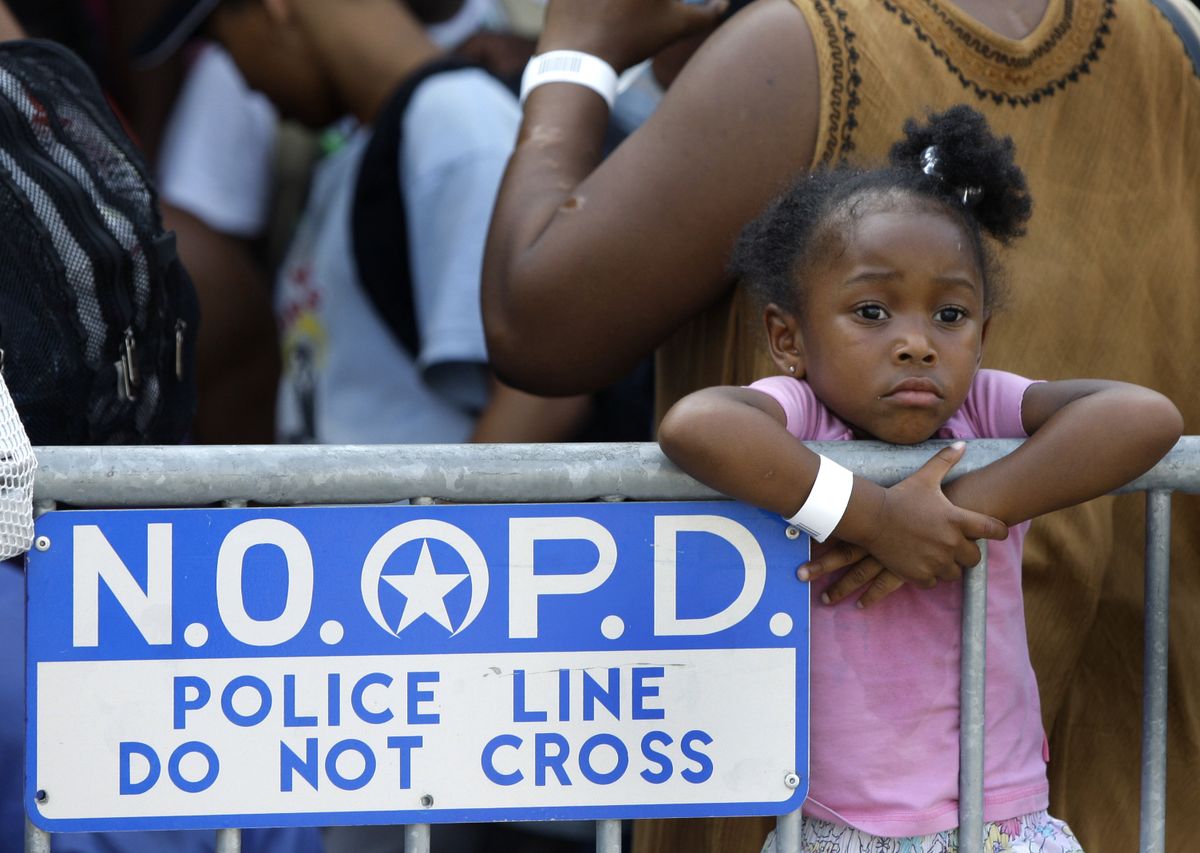New Orleans residents flee
Gustav gains steam; evacuation ordered

NEW ORLEANS – Spooked by predictions Hurricane Gustav could grow into a Category 5 monster, an estimated 1 million people fled the Gulf Coast Saturday – even before the official order came for New Orleans residents to get out of the way of a storm taking dead aim at Louisiana.
Mayor Ray Nagin gave the mandatory order late Saturday, but all day residents took to buses, trains, planes and cars – clogging roadways leading from a New Orleans still reeling three years after Hurricane Katrina flooded 80 percent of the city and killed about 1,600 in the region.
The evacuation of New Orleans becomes mandatory at 8 a.m. today along the vulnerable west bank of the Mississippi River and at noon on the east bank. Nagin called Gustav the “mother of all storms” and told residents to “get out of town. This is not the one to play with.”
“This is the real deal; this is not a test,” Nagin said, warning residents that staying would be “one of the biggest mistakes you could make in your life.” He emphasized that the city will not offer emergency services to anyone who stays.
Nagin did not immediately order a curfew, which would allow officials to arrest residents if they are not on their property.
Gustav had already killed more than 80 people in the Caribbean, and if current forecasts hold it would make landfall Monday afternoon somewhere between East Texas and western Mississippi.
Forecasters warned it was too soon to say whether New Orleans would take another direct hit, but residents weren’t taking any chances judging by the bumper-to-bumper traffic pouring from the city. Gas stations along interstate highways were running out of fuel, and phone circuits were jammed.
Forecasters at the National Hurricane Center said they were surprised at how quickly Gustav gained strength as it slammed into Cuba’s tobacco-growing western tip. It went from a tropical storm to a Category 4 hurricane in about 24 hours and was likely to become a Category 5 – with sustained winds of 156 mph or more – by today.
“That puts a different light on our evacuations, and hopefully that will send a very clear message to the people in the Gulf Coast to really pay attention,” said Federal Emergency Management Agency chief David Paulison.
Levee building on the city’s west bank was incomplete, Nagin said. A storm surge of 15 to 20 feet would pour through canals and flood the neighborhood and neighboring Jefferson Parish, he said.
Nagin estimated that about half the population had left and admitted officials were worried some people would try to stay. Even before the evacuation order, hotels closed, and the airport prepared to follow suit.
Homeland Security Secretary Michael Chertoff planned to travel to Louisiana today to observe preparations. Also, likely GOP presidential nominee John McCain and his running mate, Alaska Gov. Sarah Palin, are traveling to Mississippi today.
As part of the evacuation plan New Orleans developed after Katrina, residents who had no other way to leave the city waited in a line that snaked for more than a mile through the parking lot of the city’s main transit terminal. From there, they were boarding motor coaches bound for shelters in north Louisiana. The city expects to move out about 30,000 such residents.
“I don’t like it,” said Joseph Jones Jr., 61, who draped a towel over his head to block the blazing sun. “Going someplace you don’t know, people you don’t know. And then when you come back, is your house going to be OK?”
Jones had been in line for 2 1/2 hours, but he wasn’t complaining. During Katrina he’d been stranded on a highway overpass.
Others led children or pushed strollers with one hand and pulled luggage with the other. Volunteers handed out bottled water, and medics were nearby in case people became sick from the heat.
Unlike Katrina, when thousands took refuge inside the Superdome, there will be no “last resort” shelter. “You will be on your own,” Nagin said.
About 1,500 National Guard troops were in the region, and soldiers were expected to help augment about 1,400 New Orleans police officers to patrol and secure the city.
Standing outside his restaurant in the city’s Faubourg Marigny district, Dale DeBruyne prepared for Gustav the way he did for Katrina – stubbornly. “I’m not leaving,” he said.
DeBruyne, 52, said his house was stocked with storm supplies, including generators. “I stayed for Katrina,” he said, “and I’ll stay again.”
Many residents said the early stage of the evacuation was more orderly than Katrina, although a plan to electronically log and track evacuees with a bar code system failed and was aborted to keep the buses moving. Officials said information on evacuees would be taken when they reached their destinations.
Advocates criticized the decision not to establish a shelter, warning that day laborers and the poorest residents would fall through the cracks.
Farther west, where Gustav appeared more likely to make landfall, Guard troops were also being sent to Lake Charles.
The National Hurricane Center issued a hurricane watch for Alabama, Mississippi, Louisiana and part of Texas, meaning hurricane conditions are possible within 36 hours.
Two East Texas counties also issued mandatory evacuation orders, and authorities in Mississippi, also battered by Katrina, began evacuating the mentally ill and aged from facilities along the coast.